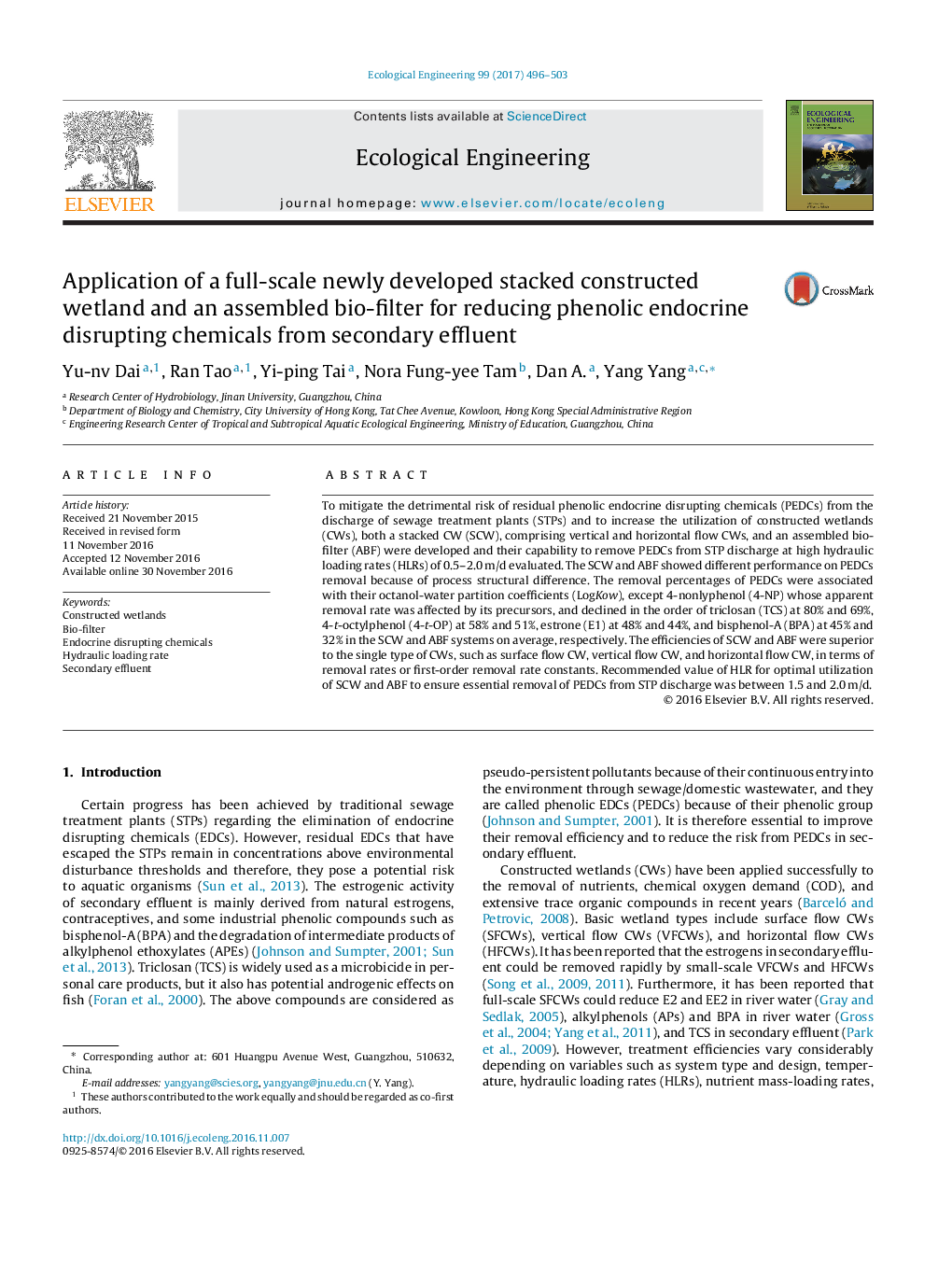| کد مقاله | کد نشریه | سال انتشار | مقاله انگلیسی | نسخه تمام متن |
|---|---|---|---|---|
| 5744019 | 1618000 | 2017 | 8 صفحه PDF | دانلود رایگان |
To mitigate the detrimental risk of residual phenolic endocrine disrupting chemicals (PEDCs) from the discharge of sewage treatment plants (STPs) and to increase the utilization of constructed wetlands (CWs), both a stacked CW (SCW), comprising vertical and horizontal flow CWs, and an assembled bio-filter (ABF) were developed and their capability to remove PEDCs from STP discharge at high hydraulic loading rates (HLRs) of 0.5-2.0 m/d evaluated. The SCW and ABF showed different performance on PEDCs removal because of process structural difference. The removal percentages of PEDCs were associated with their octanol-water partition coefficients (LogKow), except 4-nonlyphenol (4-NP) whose apparent removal rate was affected by its precursors, and declined in the order of triclosan (TCS) at 80% and 69%, 4-t-octylphenol (4-t-OP) at 58% and 51%, estrone (E1) at 48% and 44%, and bisphenol-A (BPA) at 45% and 32% in the SCW and ABF systems on average, respectively. The efficiencies of SCW and ABF were superior to the single type of CWs, such as surface flow CW, vertical flow CW, and horizontal flow CW, in terms of removal rates or first-order removal rate constants. Recommended value of HLR for optimal utilization of SCW and ABF to ensure essential removal of PEDCs from STP discharge was between 1.5 and 2.0Â m/d.
Journal: Ecological Engineering - Volume 99, February 2017, Pages 496-503
